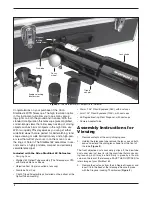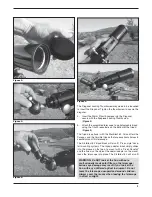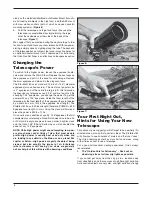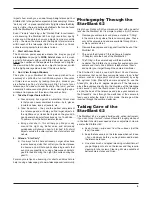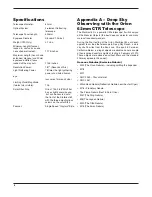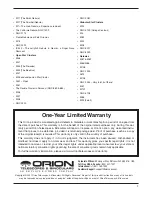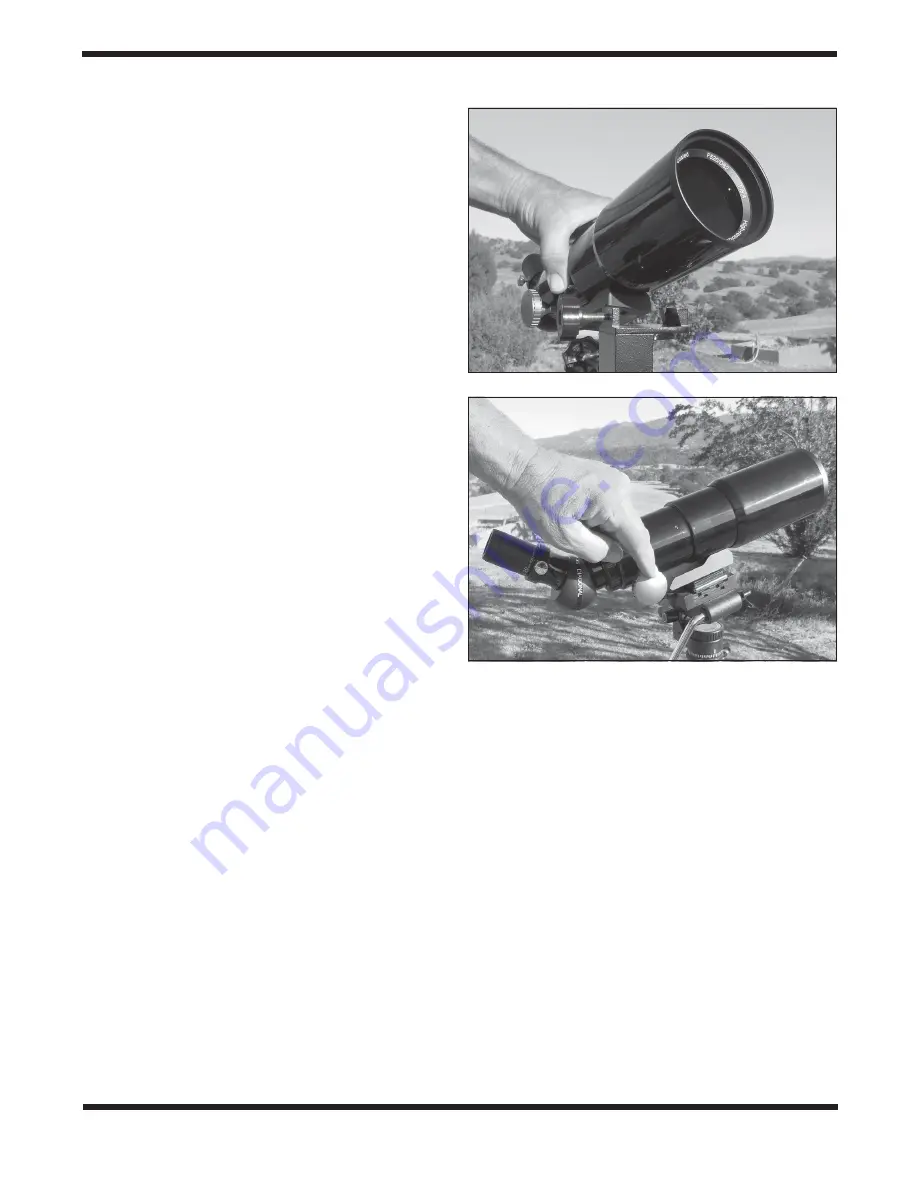
4
nicely on the motorized StarBlast AutoTracker Mount (for auto-
matic tracking of objects in the night sky), and the AZ4 mount
with slow motion controls (both of which have vixen dovetail
mounting systems). (
Figure 6)
6. Point the telescope at a target and focus! Focusing the
telescope is accomplished by simple turning the large
silver focus wheels on either side of the back of the
telescope (
Figure 7).
We suggest that you practice during the daytime to get a feel
for how to point and focus your new telescope. With low power,
aiming is simply done by sighting along the tube. The back end
of the telescope has set screws that cover mounting holes for
an optional dovetail mount for a finderscope. For astronomy,
the Orion Red Dot finder is an effective and inexpensive option.
Changing the
Telescope’s Power
To switch to the higher power, loosen the eyepiece thumb-
screw and remove the 20mm Plössl. Replace the dust caps on
the eyepiece and put it in the case for safe storage. Remove
the 4mm eyepiece and place it in the diagonal, focus.
The StarBlast 62 uses standard 1.25-inch (1.25") diameter
eyepieces (also called oculars). The next most popular size
is 2" eyepieces, but these are too large to fit this telescope.
Inexpensive toy telescopes use 0.96" and are too small. By
changing 1.25" eyepieces, you change the power. To get the
power with any 1.25" eyepiece, divide the focal length of the
telescope by the focal length of the eyepiece (they are labeled
by a number in mm, this is the eyepiece focal length). The
StarBlast 62 has a 520 focal length; therefore, POWER = 520/
Eyepiece focal length (in mm). Using the standard 4mm eye-
piece the power is 520/4 = 130x.
Orion sells many additional, quality, 1.25"eyepieces that will
complement your telescope. Good first choices would be a 25
or 32mm wide angle eyepiece for even wider, brighter views
and the Orion 1.25" “Shorty” Barlow Lens, which doubles the
power of any 1.25" eyepieces.
NOTE: While high power might sound tempting, low pow-
ers give sharper, wider fields of view that most people
prefer. High power is usually best used only when you
are looking to see detail on the Moon or on a planet like
Jupiter or Saturn. High powers magnify the object being
viewed, but also amplify the impact of air turbulence
(what astronomers call “seeing”), so views are generally
not as sharp, but this will vary with observing conditions.
Your First Night Out,
Hints for Using Your New
Telescope
For astronomy, we suggest your first target to be a partially illu-
minated moon, around first quarter is ideal. The StarBlast 62
will allow you to see hundreds of craters and the lunar “seas.”
The Orion Learning center has star charts and maps, along
with articles on how to use a telescope.
For a good astronomical viewing experience, Orion always
recommends:
1. The “Golden Rule for Astronomy” – Seek out an
observing site as far from city lights as possible.
If you cannot get away from the city, go to a location away
from streetlights and other sources of nighttime light pollution.
Astronomical objects are very dim, and light pollution strongly
Figure 7.
Figure 6.


